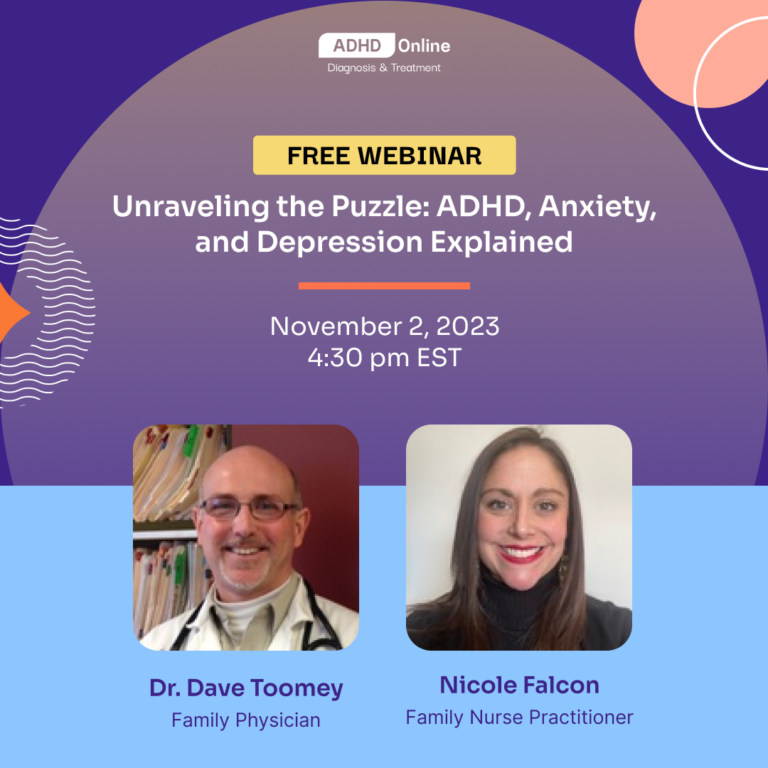
By Michelle Seitzer
Every year, when the last few days of school roll around, my husband and I brace ourselves for the storm of emotions.
Our daughter has ADHD and other special needs, and struggles with transitions, change and the “ending” of things. Also, the thought of being bored terrifies her. Sometimes she’ll ask me — on a Wednesday — what our plans are for the weekend. If I say: “We’re going to relax, no specific plans,” she’ll immediately respond with a loud groan and a panicked look in her eyes. That’s immediately followed by: “I hope I won’t be bored! I hate being bored!”
The ADHD brain in the summertime
This fear and dread of unscheduled time is intensified at the end of the school year — and for parents too. That’s because, instead of facing just two days without a predictable daily schedule, it’s almost three months.
While all kids are generally excited to be free of homework, teachers and tests, it’s the lack of plans — of a consistent, predictable schedule — that triggers agitation and anxiety for many kids with ADHD. As they see it, no plans = boredom, and boredom = no fun.
So how do we disrupt that cycle? Besides summer camp and lots of swimming, keeping our sanity as parents means having a plan for the downtime. But first, let’s reframe boredom. That can be a mindset shift that’s particularly valuable for our kids with ADHD.
Why boredom is a good thing
Being bored is actually good for our kids’ development, according to Stephanie Lee, Psy.D., director of the ADHD and Behavior Disorders Center at the Child Mind Institute.
In an article on boredom’s benefits, Dr. Lee says the key is helping kids “learn how to manage their boredom so they can develop independence and feel agency over their own happiness and well-being.”
Jodi Musoff, MA, M.Ed., an educational specialist at the Child Mind Institute, explains (in the same article) how boredom helps children develop planning strategies and essential problem-solving, flexibility and organizational skills. These are skills that children whose lives are very structured have fewer opportunities to practice.
Still, parents can help their children with ADHD take ownership of that boredom or downtime. They can help children reframe it as something positive — instead of something to avoid or dread.
Since the majority of kids don’t plan their days, giving them the opportunity to come up with projects and ideas to fill their time encourages the development of those critical organizational and problem-solving skills, according to Musoff.
And there’s a bonus: These skills transfer over to academic settings, which is a win for parents and teachers too.
ADHD parent-approved advice & ideas
I reached out to my village of ADHD mom friends to find out how they tame the boredom beast in the summertime. Here are the ideas they shared:
Start with a schedule
Amy Haman is mom to a laid-back high schooler with ADHD and a super active preteen with ADHD. Her summer motto is: “If not camp, swimming … and detailed structure planned ahead.” Which, as she adds, is why she loves camp for her kids.
“What I mean by detailed structure is having the day written out visibly so they aren’t shocked by the transitions,” says Haman. “I structure by the half-hour or hour depending on the kid.”
For example:
- 9-10 a.m.: Breakfast/TV
- 10-10:30 a.m.: Bike ride
- 10:30-11 a.m.: Chores
- (other activities, based on the family’s favorite activities, like crafts, creativity, hiking, shopping, and play dates)
It all sounds fun and may look good on paper, but overseeing this busy and structured summer schedule for two kids with ADHD is practically a full-time job. And many parents are still balancing work and other caregiving obligations that don’t stop just because school is out. “I’m exhausted just thinking of it,” Haman says.
It’s important to include downtime for yourself even as you carve out these schedules for your kids. Otherwise, you’ll be burned out by day two.
There’s nothing wrong with scheduling blocks of the day for the kids to enjoy “free play” or “your choice” activities. But as planning and organizing is often a challenge for the ADHD brain, make sure you provide a list of options — and necessary supplies — for those time slots.
Even better, have your kid or kids make a list of what they can do and what they would need to do it. We do this in our home and it’s a great way for our daughter to feel a sense of control over her schedule. It also gives her more ownership of that time, which motivates her to enjoy her favorite activities without requiring much of our direction or attention.
Backyard summer camp for busy boys and girls
As the mom of two young boys — both with ADHD and boundless energy — Bonnie Johnson has a ton of tricks up her sleeve for the summertime. She gathered many of these creative ideas and more during the 2020 shutdown, dubbing it “Backyard Summer Camp.”
Because even though many summer programs for kids are open again this year, “there’s lots of hours to fill in the summer,” says Johnson.
Here are a few of their family favorites:
- obstacle courses
- their own version of Olympic Games
- sandbox time
- ice making & chopping (safety goggles are a must for this one!)
- scavenger hunts
- animal rescues using stuffed animals
- hide and seek
- fort building
- finding ways to bless others
- outdoor time: finding sticks, playing in the mud, etc.
- Sky Zone (an indoor trampoline park for rainy days)
- building with cardboard and duct tape – lots of colored duct tape is a must in the Johnson household
Johnson’s most important piece of advice to parents? Allow the messes. “Just teach them to clean up after themselves,” she adds.
She, like Haman, swears by a routine and schedule — and chores. “Keep practicing non-preferred tasks during the summer,” says Johnson.
And while most kids would like school to stay out of sight and out of mind for the summer months, Johnson encourages parents to encourage “school practice” activities like independent reading, flashcards for a variety of subjects and reviewing sight words.
Set up stations for self-directed play
As a child, I could keep myself busy — independently — for hours. My daughter has a ton of interests and favorite activities, but she often needs a gentle prompt or motivation to get started. She rarely initiates on her own.
What helps is having things ready and on-hand for easy access. You’ll have to adjust this based on age and make accommodations as needed (in our home, it’s not safe or wise to keep scissors within reach). Set up a few areas around your house — inside and outside — where your kid or kids can play independently. This is great for those moments when you need a break, or when they actually need to be a little bored. Remember, parents: It’s not your job to be their entertainment director.
One way to think about setting up these stations is creating spaces that serve different purposes and meet a variety of needs. For example:
Self care
My daughter loves makeup, so there’s a collection of approved items in the bathroom she can use. Sometimes, she’ll take a bath with Epsom salt and lavender before dinner when I’m busy cooking and she’s tired from the school day. A shower is a boredom buster option for her too, and it often calms her down. Independent activities don’t always have to be entertainment-focused.
Creative Expression
Arts and crafts are another downtime favorite here. So there’s a desk in the living room and a large crate underneath full of stickers, markers, glue, watercolor paints, paper and other supplies that she can use (mostly) on her own.
Move Your Body
Jump ropes, bikes, swings, soccer balls, skateboards: When your kids can’t stop moving, set them up with a designated safe place inside or out where they can engage in some kind of physical activity. On rainy days, or when I can’t be outside to supervise for safety, my daughter enjoys the Just Dance game on the Nintendo Switch. It gets her moving and the music boosts her mood.
Make a Mess (or Get Loud)
Sometimes banging out a tune on the keyboard or playing her trumpet as loud as possible is what my daughter needs, but I don’t always want to hear it up close. So we designated an area in the basement where she can play all of her instruments at the volume she wants. The basement (or any less formal area of your home) is a great place for messy projects too.
Slow Down
We keep a collection of books, magazines and games (checkers, Simon, dominoes, etc.) in the living room, so a favorite wind-down activity — particularly in the evenings — is sitting out on the deck with a cold drink and a book or game.
Barbies, books and dress-up are the things my daughter likes to do in her room when she needs some “chill time,” as she calls it. Sometimes she’ll even put her music on to set the tone.
Life Skills and Hobbies
If your kids love to cook or bake, have them prepare their own snacks or do some activities in the kitchen that are age- and ability-appropriate. My daughter loves to be my sous chef. While it can be more challenging than helpful at times, I try to find tasks she can help with so she’s involved — instead of hanging out “unsupervised” during meal prep.
Birdwatching and gardening are my and my husband’s favorite hobbies, respectively, and we’ve involved our daughter in them, too. She now enjoys identifying the birds at the feeder (bonus: it’s something she can do independently) and tells me all about the plants she and Dad put in the ground and watered.
Remember this too: Boredom may seem like the enemy, but if you’d ask many parents of kids with ADHD, the real “enemy” is overstimulation. That can lead to meltdowns and more. It’s a tricky thing — keeping our kids busy enough but not so busy that they can’t relax or regulate. As you find your way through the summer, keep this balance in mind. And don’t forget to give yourself breaks too!
Sources:




